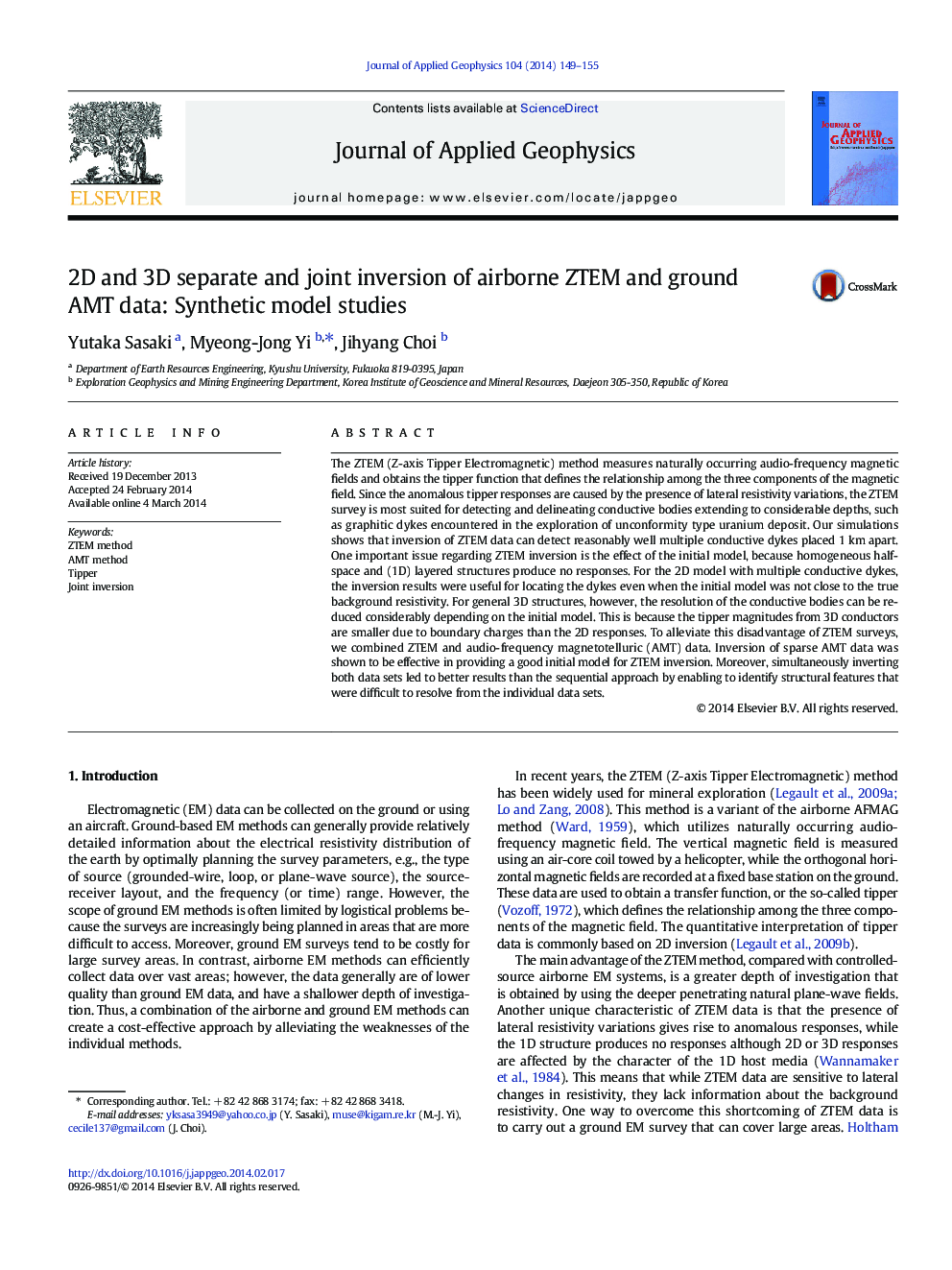| کد مقاله | کد نشریه | سال انتشار | مقاله انگلیسی | نسخه تمام متن |
|---|---|---|---|---|
| 4740209 | 1641147 | 2014 | 7 صفحه PDF | دانلود رایگان |

• The resolution of ZTEM data for conductive dykes is evaluated.
• The effect of the starting model on ZTEM inversion is studied.
• An algorithm of joint inversion of ZTEM and AMT is presented.
• The performances of the simultaneous and sequential joint inversions are compared.
The ZTEM (Z-axis Tipper Electromagnetic) method measures naturally occurring audio-frequency magnetic fields and obtains the tipper function that defines the relationship among the three components of the magnetic field. Since the anomalous tipper responses are caused by the presence of lateral resistivity variations, the ZTEM survey is most suited for detecting and delineating conductive bodies extending to considerable depths, such as graphitic dykes encountered in the exploration of unconformity type uranium deposit. Our simulations shows that inversion of ZTEM data can detect reasonably well multiple conductive dykes placed 1 km apart. One important issue regarding ZTEM inversion is the effect of the initial model, because homogeneous half-space and (1D) layered structures produce no responses. For the 2D model with multiple conductive dykes, the inversion results were useful for locating the dykes even when the initial model was not close to the true background resistivity. For general 3D structures, however, the resolution of the conductive bodies can be reduced considerably depending on the initial model. This is because the tipper magnitudes from 3D conductors are smaller due to boundary charges than the 2D responses. To alleviate this disadvantage of ZTEM surveys, we combined ZTEM and audio-frequency magnetotelluric (AMT) data. Inversion of sparse AMT data was shown to be effective in providing a good initial model for ZTEM inversion. Moreover, simultaneously inverting both data sets led to better results than the sequential approach by enabling to identify structural features that were difficult to resolve from the individual data sets.
Journal: Journal of Applied Geophysics - Volume 104, May 2014, Pages 149–155